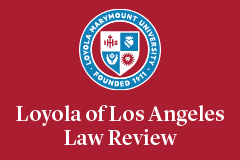Abstract
In 1980, in Central Hudson Electric Corp. v. Public Service Commission of New York, the Supreme Court established the current framework for determining the constitutionality of commercial speech restrictions. It has been six years since the Third Circuit made its decision in The Pitt News v. Pappert, holding, under the Central Hudson test, that a state ban on alcohol advertisements in a college newspaper violated the First Amendment right to free speech. Recently, the Fourth Circuit, in Educational Media Co. at Virginia Tech v. Swecker, applied the same test and came to an entirely different conclusion when it held that a similar state ban was constitutional, having met the four prongs of the Central Hudson test. These two cases, and the resulting circuit split, highlight the extreme unrest and uncertainty that permeates the lower courts’ decisions on the constitutionality of restrictions on commercial speech. The Central Hudson test is a malleable standard that has resulted in inconsistent outcomes. What level of scrutiny should apply to restrictions on commercial speech? How much paternalism is acceptable? This Note proposes a change to the second, third, and fourth prongs of the Central Hudson test, which will increase to a level of intermediate scrutiny the evidentiary standard that courts apply, reduce paternalism in commercial speech, and place an emphasis on the protection of consumers. In order to prevent a chilling effect on commercial speech, the Supreme Court must acknowledge the deficiencies of the Central Hudson test and replace that flawed standard with a workable commercial speech test.
Recommended Citation
Kayla R. Burns,
Reducing the Inherent Malleability of Mid-Level Scrutiny in Commercial Speech: A Proposed Change to the Second, Third, and Fourth Prongs of the Central Hudson Test ,
44 Loy. L.A. L. Rev. 1579
(2011).
Available at: https://digitalcommons.lmu.edu/llr/vol44/iss4/7



